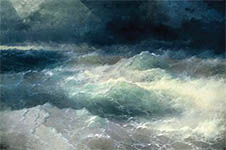introduction
About water
There is so much negative news about the wellbeing of our oceans, that we tend to forget its history.
We know more about the moon than about the vast depths of the ocean, but the oceans are very much alive, and fight back.
Are we listening?
No.
History, in general, is about violence. This violence is more real than your daily Netflix violence or from the games you educate your children with. No, this is CNN violence or Al Jazeera’s. Coloured but someone’s truth, where your friend may very well be seen as my enemy.
We depend very much on what other people are telling us. The discoverers -sailors- simply hád to come home with stories, again coloured by superstition, faith, or by what they wanted to tell their commissioners.
Amerigo Vespucci tried to find the ‘innocent’ native in South America. As more discoverers did after him in the Pacific. There are no such people: atrocities, caste systems and human sacrifices seem to be universal, and greed was the main reason for all discoveries.
Slavery is as much ‘alive’ today as it was in the 17th century and before that. For me, personally, it makes no sense to feel guilty about what my ancestors did. Shameful yes, but not guilty. A familial analogy might illustrate this point – if one of my brothers was in jail, would this make me a criminal?
Internet is open. We can research anything. We may use any picture older than 70 years and when the artist is deceased. Now, which is new in a way, we have to be careful the image is true in itself and not altered, cropped or in another way manipulated.
As for this book: try to see what you are looking at. No, I am serious and take your time.
I am sure you agree that apart from all the beauty and craftmanship in these paintings and art, we can also learn from the historic context. Eyeopeners.
God shaped the world and left it to us. That is it; which makes us responsible.
It is our past and so is the future.
ref. # 185 2014 travel journal - The Blue Humanities
 In studying the sea, we are returning to our beginnings
In studying the sea, we are returning to our beginnings"Although fully half of the world's people now live within a hundred miles of an ocean, few today have a working knowledge of the sea. As a science, oceanography is still in its infancy. More is known about the dark side of the moon than is known about the depths of the oceans," writes the sea explorer David Helvarg. Yet large numbers of people know the sea in other ways, through the arts and literature. From the beginning of the nineteenth century, fiction has been imagining undersea worlds that explorers were unable to reach. Rachel Carson, who did as much as anyone to open up the marine sciences, was inspired by the arts and literature. She wrote in 1951 that humans were destined to return to the sea from which they had emerged eons earlier, but this time they would do so "mentally and imaginatively." This cultural turn to the sea began in the late eighteenth and early nineteenth centuries, and by now there is a vast trove of writing, painting, and music that awaits examination under the rubric of what English professor Steve Mentz would like us to call the 'blue humanities'."
please read the full article here
© text:John R. GILLIS (author of 'The Human Shore', Seacoasts in History) | HUMANITIES, May/June 2013 | Volume 34, Number 3
© image: 'Among the Waves' by Ivan AIVAZOVSKY (1817-1900) / Scala / Art Resource, NY
tags: #the Blue Humanities #John R. Gilles #Ivan Aivazovsky
